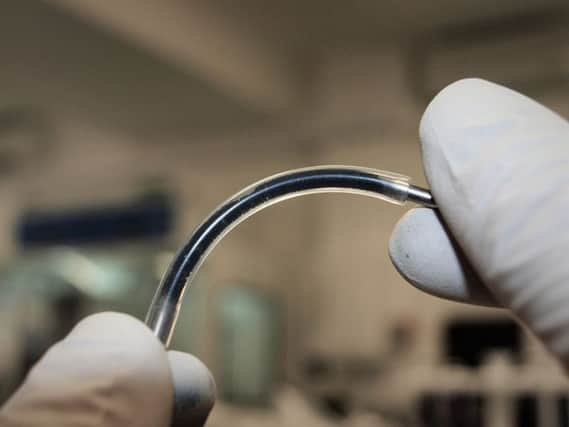University of Sussex scientists create '˜life-saving' baby monitor


And parents concerned about the risk of cot death could keep track of their baby’s heart and breathing rates with automatic updates to their smartphones using ‘fitness tracker’-style technology built into baby sleep suits.
The team at the University of Sussex were inspired to create this new health monitor after the Bill and Melinda Gates Foundation called for new affordable wearable health technologies for babies in situations where resources are scarce.
Advertisement
Hide AdAdvertisement
Hide AdProfessor Alan Dalton, from the university’s School of Mathematics and Physical Sciences, and his team of physicists have created a liquid made from an emulsion of graphene, water and oil, which conducts electricity.
Graphene is a two-dimensional material made from carbon atoms that is strong, flexible and conductive, the university said. When a channel or tube holding the liquid is stretched, even by a small amount, the conductivity of the liquid changes. This means that the respiration rates and pulses of people wearing the device can be tracked, according to researchers.
At the moment, clunky sensors need to be attached to babies’ tiny feet or hands, which often fall off. The information is then relayed to a monitor by wires which can restrict the child’s movement.
The team’s technological development would see the monitoring done wirelessly and non-invasively with a ‘fitness tracker’-like band – or even embedded within the fabric of a sensor vest for the baby to wear.
Advertisement
Hide AdAdvertisement
Hide AdProfessor Dalton said: “I came up with the idea for the new graphene emulsion at the core of this technology while making salad dressing – which is a type of emulsion – at home with my daughter. It’s amazing how, as scientists, we take inspiration from the everyday world around us.”
Professor Dalton says the technology could go even further than monitoring babies’ health.
“Of course the ultimate potential is wider than that,” he said. “Anyone interested in tracking their heart or respiration rates – joggers for example – may be interested to wear this technology within their exercise gear.”
A paper describing the findings was published last week, in the peer-reviewed Royal Society of Chemistry journal Nanoscale. To read the paper, visit: dx.doi.org/10.1039/c7nr05568d